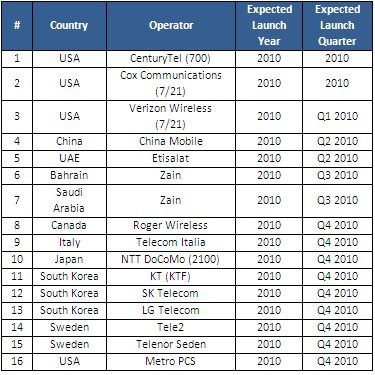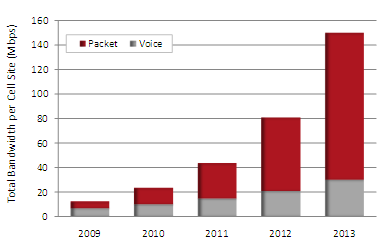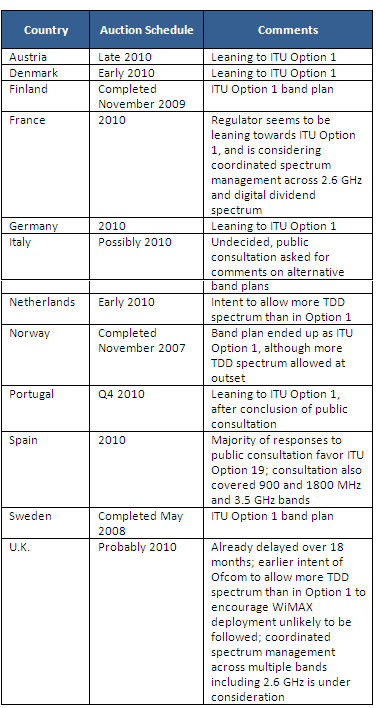
Erik Boch holds a Masters degree in Electrical Engineering from Carleton University in Ottawa and is a registered professional engineer. Erik has held senior engineering or technical management positions at a number of communications and aerospace companies namely Litton Systems, ComDev, Lockheed Martin and Alcatel Networks (formerly Newbridge). While at Alcatel, Erik was AVP of the Wireless Systems Group and was involved in various aspects of microwave & millimeter wave subsystem and system design for more than 22 years. Erik led the R&D team at Alcatel (formerly Newbridge) that introduced the first ATM-based Fixed Wireless Access System in the industry. Erik has been published extensively in major networking publications, including Telephony, Microwave Journal, Wireless Review, Internet Telephony and America's Network. Erik has spoken at numerous industry events including IEEE sessions, WCA, Broadband Wireless World and IWPC. Erik has served on the Technical Advisory Board of the NCIT (National Capital Institute of Technology). Erik holds several approved RF design patents, with numerous patents pending.
Over the last 12 – 18 months, so called “4G” networks have slowly transitioned from a future concept towards a build-out reality. Aside from major US 4G network deployments that have been underway for over a year, deployments have also begun in many regions around the globe. Table 1 provides an outline of build-out activity (as of the end of 2009).

Table 1 – 4G network build-out summary, "Mobile Broadband -2.6 GHz Band" Report
As this industry change is taking place, advances in devices, services and applications continue to drive the need for the advanced capabilities and data-rate improvements promised by these emerging 4G networks. As shown below in figure 1, mobile traffic is forecasted to roughly double every year between now and 2013.

Figure 1 - Bandwidth requirements per cell site - Cisco Global Mobile Data Traffic forecast, 2009
With the move to 4G comes the need for broadband access spectrum that will support the escalated Radio Access Network (RAN) data rates. Generally the required amount of spectrum drives the allocations toward higher frequency allocations. Globally, many regulating bodies are now auctioning (or planning to auction) spectrum for 4G RAN applications. Table 2 shows global regulatory activity related to 4G spectrum (2600 MHz).

Table 2 – Recent regulatory activities related to making 4G RAN spectrum available - "Mobile Broadband - 2.6 GHz Band" Report
Impacts of 4G to the Backhaul Layer of the Network
The obvious backhaul problem that 4G RAN deployments create is that the backhaul layer will require significant bandwidth upgrades as well as a transition to an all-IP transport structure. 4G basestations will generally require anywhere from 50 – 200 Mbps of bandwidth in order to support the range of advanced services currently envisioned.
Aside from capacity, another less apparent impact of 4G on the backhaul network relates to the shift to higher operating frequencies in the RAN (as described earlier). These higher frequencies do not propagate as well in the downtown service areas where the increased losses associated with diffraction, refraction and absorption negatively impact coverage performance.
In order to combat the reduction in coverage performance, the cells have to be moved closer together into a “micro-cellular” networking structure. Additionally, particularly in the downtown urban-canyon environment, the base stations have to be moved off the roof-tops and brought down toward the street level in order to achieve useable coverage at this level.
MicroCellular Backhaul Options
Microcellular backhaul can be achieved in a few ways, namely;
1. XDSL
2. Optical
3. In-band wireless
4. Out-of-band wireless
Cabled solutions (1 and 2) above suffer from obvious cost and time-to-deploy limitations. Fiber, while generally abundant in urban areas, is not typically located where microcells would be deployed, and building out fiber is rarely a viable option. DSL-based solutions face similar constrains in addition to challenges around delivering the required data rates across the practically-required cable run lengths.
In-band wireless solutions typically consume valuable RAN access spectrum. In some cases, TDD allocations suitable for backhaul are embedded in the available spectrum defined by the regulatory bodies. In other cases, the operator time shares (using the TDD construct) access and backhaul functions within the sequential TDD transmissions. When TDD is used, high delay and low capacities are imposed on the backhaul links, often rendering this approach unsuitable for many delay-sensitive or delay-variability-sensitive applications/services.
Out-of-band wireless backhaul involves the use of spectrum which is not shared with the access functionality. It therefore does not consume the revenue-generating capacity of the access spectrum, nor does it have to be time-synchronized with it.
High Capacity Wireless Backhaul for Microcellular Deployments
When considering out-of-band wireless backhaul, there is usually a keen desire to employ small package sizes which are amenable to street-light-pole (SLP) or traffic-light-pole (TLP) mounting. Small size packages demand small antenna structures which simultaneously require high gain in order to maximize multipath suppression and system gain. These factors push the design to higher frequencies, such as;
• 24 GHz or 38 GHz DEMS spectrum
• 24 GHz ISM or SRD spectrum (unlicensed)
• 26, 28 GHz or 31 GHz LMDS spectrum
• 42 GHz spectrum (Europe only)
• 60 GHz spectrum (unlicensed)
Using street-level installations, various network structures can be realized in order to interconnect micro-cellular or pico-cellular base station locations. Figure 2 illustrates the backhaul networking concepts that might be employed. The various micro-cellular base-station locations are connected by rings with spurs or spur-daisy-chains in order to attain full backhaul connectivity. In the center is a key point-of-presence (PoP) where the sub network traffic is aggregated and then backhauled further toward the core by a high capacity link into the macro-cellular network (a local tower location, or high-rise building site, etc).

Figure 2 – Micro-Cellular sub-network concept
Impacts to the Microwave Component Industry
The development of this market relies on basic technologies which are not necessarily “new” in the sense that functions like amplifiers, Los, etc are needed. What is different is the following;
1. There is a focus on frequency ranges which may not have been considered by many MMIC design-manufacturers
2. There is a need for specialized antennas which are well suited for the downtown “urban canyon” propagation environment
3. New, low phase noise MMIC VCOs are required to support high order QAM modulations at high frequencies
4. High volume deployments will drive down equipment costs and will therefore require significant component cost reductions.
Summary
As the demand for mobile bandwidth continues to rise, traditional macro-cellular architectures will fail to deliver the needed network capacity – particularly in dense urban centers. Microcellular architectures, which allow for spectral re-use and higher overall network capacity, offer a compelling solution to this problem, with high capacity wireless backhaul delivering a viable and cost-effective enabler of these future networks.
